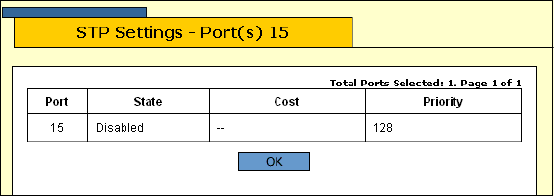User guide
Table Of Contents
- Contents
- Figures
- Tables
- Preface
- Section I
- Basic Operations
- Chapter 1
- Basic Switch Parameters
- Configuring the Switch’s Name, Location, and Contact
- Changing the Manager and Operator Passwords
- Setting the System Date and Time
- Rebooting a Switch
- Pinging a Remote System
- Returning the AT-S63 Management Software to the Factory Default Values
- Displaying the IP Address of the Local Interface
- Displaying System Information
- Chapter 2
- Port Parameters
- Chapter 3
- Enhanced Stacking
- Chapter 4
- SNMPv1 and SNMPv2c
- Chapter 5
- MAC Address Table
- Chapter 6
- Static Port Trunks
- Chapter 7
- Port Mirroring
- Section II
- Advanced Operations
- Chapter 8
- File System
- Chapter 9
- File Downloads and Uploads
- Chapter 10
- Event Logs and Syslog Client
- Chapter 11
- Classifiers
- Chapter 12
- Access Control Lists
- Chapter 13
- Class of Service
- Chapter 14
- Quality of Service
- Chapter 15
- Denial of Service Defenses
- Chapter 16
- IGMP Snooping
- Section III
- SNMPv3
- Chapter 17
- SNMPv3
- Configuring the SNMPv3 Protocol
- Enabling or Disabling SNMP Management
- Configuring the SNMPv3 User Table
- Configuring the SNMPv3 View Table
- Configuring the SNMPv3 Access Table
- Configuring the SNMPv3 SecurityToGroup Table
- Configuring the SNMPv3 Notify Table
- Configuring the SNMPv3 Target Address Table
- Configuring the SNMPv3 Target Parameters Table
- Configuring the SNMPv3 Community Table
- Displaying SNMPv3 Tables
- Section IV
- Spanning Tree Protocols
- Chapter 18
- Spanning Tree and Rapid Spanning Tree Protocols
- Chapter 19
- Multiple Spanning Tree Protocol
- Section V
- Virtual LANs
- Chapter 20
- Port-based and Tagged VLANs
- Chapter 21
- GARP VLAN Registration Protocol
- Section VI
- Port Security
- Chapter 22
- MAC Address-based Port Security
- Chapter 23
- 802.1x Port-based Network Access Control
- Section VII
- Management Security
- Chapter 24
- Encryption Keys, PKI, and SSL
- Chapter 25
- Secure Shell (SSH)
- Chapter 26
- TACACS+ and RADIUS Protocols
- Chapter 27
- Management Access Control List
- Index

Chapter 18: Spanning Tree and Rapid Spanning Tree Protocols
282 Section IV: Spanning Tree Protocols
5. To view port settings, click a port in the switch and click Status or
Settings.
The STP Settings page is shown in Figure 114.
Figure 114. STP Settings Page
The STP Settings page displays a table that contains the following
columns of information:
Port
The port number.
State
Current state of a port. The possible states are Listening, Learning,
Forwarding, or Blocking when spanning tree is enabled on the switch.
When spanning tree is not enabled on the switch or if a port is not
being used, its state will be disabled.
Cost
Port cost of the port.
Priority
The port’s priority value. The number is used as a tie breaker when
two or more ports have equal costs to the root bridge.
6. Click OK to close the page.
Resetting STP to
the Default
Settings
To reset STP to the factory default settings, perform the following
procedure:
1. From the Home page, select Configuration.
2. From the Configuration menu, select the Layer 2 option.
3. Select the Spanning Tree tab.
The Spanning Tree tab is shown in Figure 109 on page 274.
4. Verify there is no check in the Enable Spanning Tree check box. If
there is a check, click the option to remove it. Spanning tree must be
disabled in order for you to return it to its default settings.










